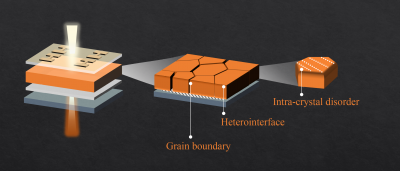Newswise — Researchers from The Hong Kong University of Science and Technology, et al. have conducted a review entitled “Microstructural disorder in perovskite photovoltaics”. This review was published in Front. Chem. Sci. Eng., Volume 19, Issue 9.
Metal halide perovskites (MHPs) are promising semiconductors for photovoltaics, with perovskite solar cells (PSCs) achieving over 27% power conversion efficiency (PCE). However, the quantitative structure-property relationship of MHPs remains unclear, and microstructural disorders across multiple spatial scales have underexplored impacts. The aim of this review is to establish a framework for transitioning from microstructure observation to control. The researchers elaborated on hidden microstructural disorders (interfacial disorders and intra-crystal disorders), their formation mechanisms, and effects on PSCs’ mechanical reliability and long-term stability. They also discussed theory-driven engineering strategies to mitigate these disorders, relying on a combination of theoretical modeling and experimental characterization.
Key findings include the identification of interfacial disorders such as grain boundary grooves (GBGs), nanoscale groove traps (nano-GTs), and grain surface concavities (GSCs), which disrupt charge transport, induce ion migration, and weaken mechanical integrity. Intra-crystal disorders (ICDs) like dislocations, stacking faults, and nanoclusters show dual effects—accommodating strain while causing performance heterogeneity. Notably, strategies such as interfacial energy tuning with additives (e.g., i-BACl, BAAc, TFSAP) and in situ defect healing via low-dose stimuli effectively mitigate these disorders, improving PCE retention (over 90% for 1000–1500 h) and mechanical reliability.
For more detailed information, the full paper is available at: https://doi.org/10.1007/s11705-025-2600-z.
